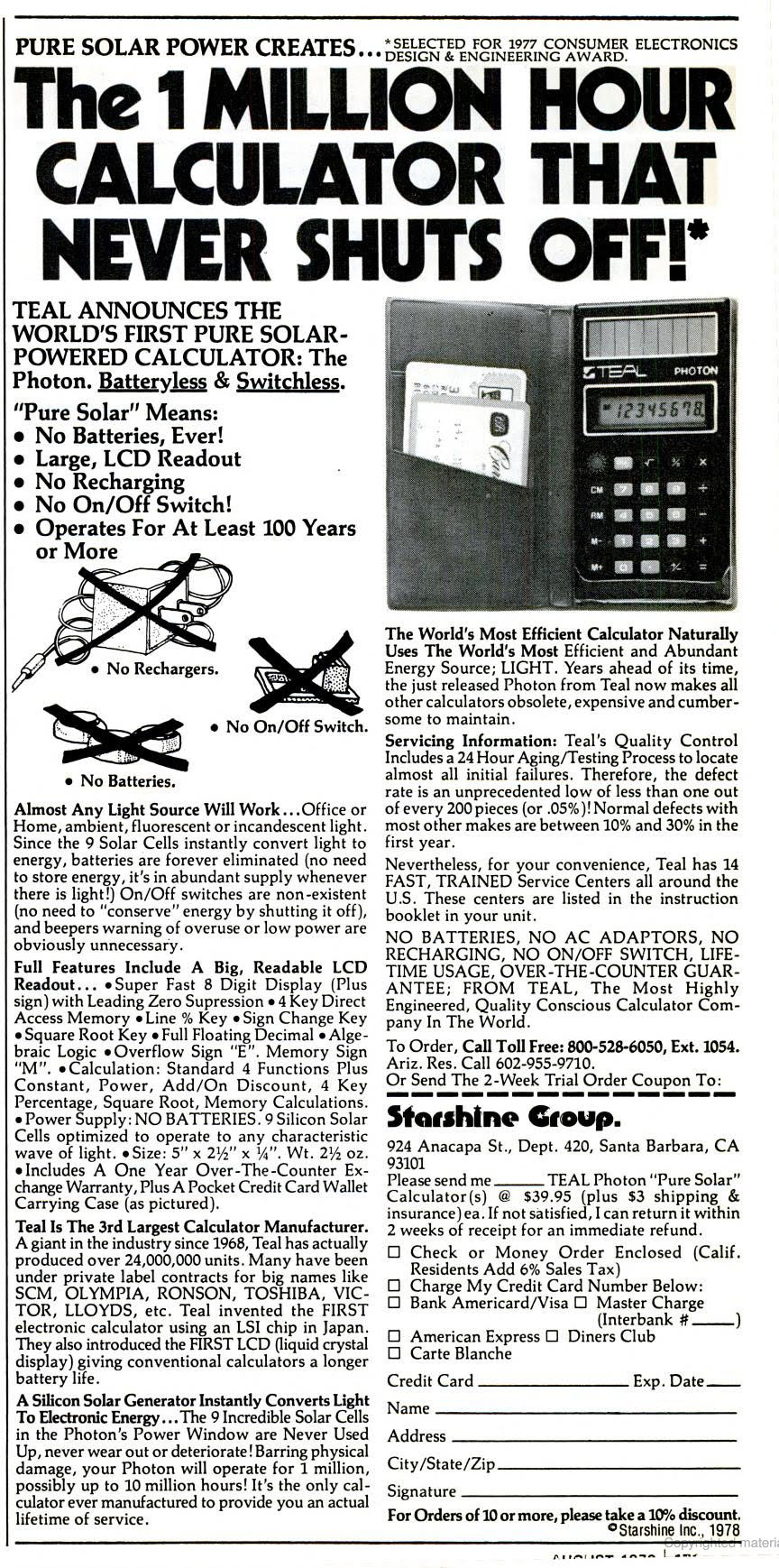If you haven’t seen this video—strap in, it’s 18 minutes long—you will soon find yourself questioning everything you know about life, love, and technology.
But the fact that this video exists offers us an opportunity to at least talk about the innovators that actually did put solar cells onto their calculators, and reframed the potential of technology and power in the process.

(Google Books)
One of those early innovations was the Teal Photon, which is widely believed to be the first calculator that did not need a charger. With a solar cell larger than its screen, it automagically turned on whenever it was near a light source, and advertising (shown above, from an August 1978 edition of Popular Science) claimed that the calculator would work for “1 million, possibly up to 10 million hours!”
(The Sharp EL-8026 Sun Man, released in 1976, was the first solar calculator, though they didn’t work like the solar calculators we know and love—the solar cells were large, located on the back, and designed to recharge the battery.)
Of course, it wouldn’t have been possible if Bell Labs hadn’t figured out more than two decades earlier how to build a photovoltaic cell out of silicon. Building on more than 100 years of knowledge, researchers at the facility built the technology to improve telephone systems in rural locations, spending a whole bunch of time tweaking the details. Bell Labs revealed their findings to the world in 1954.
Calculators may have been the primary way that we got to know solar cells, but it wasn’t the first consumer product to feature them. That would be the Synchronar 2100, a wrist watch that first showed up in 1975 and was one of the more interesting watch gimmicks of the era. That watch cost hundreds of dollars—and the fact that the same technology moved to calculators just a few years later is a major sign of progress.
But admittedly, we haven’t seen quite so much portable solar progress since that point. (Personally, I have a solar-powered battery charger, and it takes days to do its thing.) While we haven’t gotten to solar-charged smartphone nirvana, it’s easy to lose sight of the fact that when calculators got solar-charging capabilities, it was a genuine game-changer.
As a result, it’s really depressing that our mainstream cheapo calculators are phoning it in so obviously.
(photo by Joe Haupt/Flickr)
:format(jpeg)/2017/08/0809_calculator.jpg)
/2017/08/0809_calculator.jpg)
/uploads/ernie_crop.jpg)